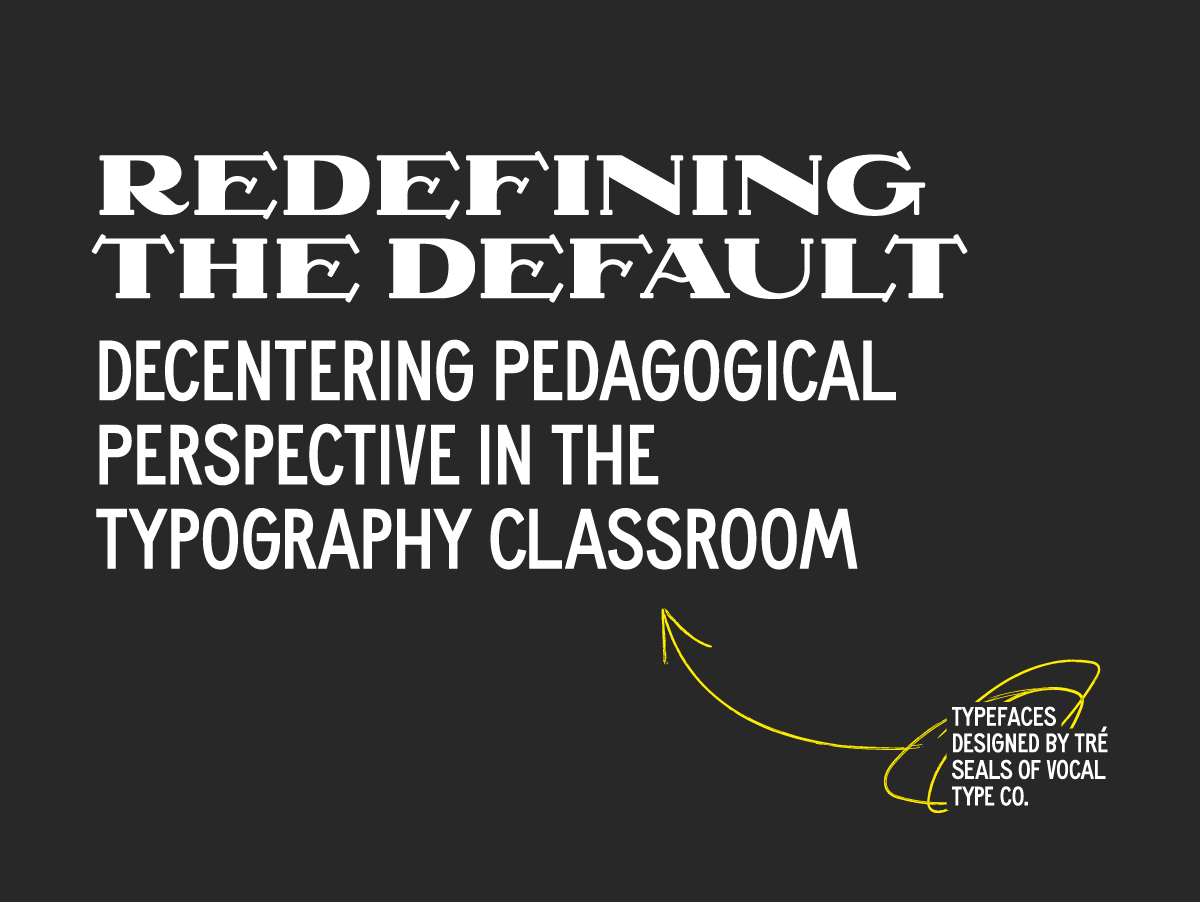Mia Culbertson
Assistant Professor
Kutztown University
Typography is central to design, yet the standard curriculum centers around Western, able-bodied, straight, white, and male figures, frequently misrepresenting or excluding marginalized communities. In educational and professional spaces, this can have harmful effects on BIPOC, LGBTQ+, and disabled designer and student communities. Creating a typography classroom that prioritizes equitable representation will avoid alienating minority student communities and reduce stereotyping through uninformed design decisions.
There has been a recent push in our discipline to decenter and decolonize our curriculum with the publication of resources like Decentering Whiteness in Design History Resources (Pass et al., 2020) and Extra Bold (Lupton et al., 2021); in this presentation I will discuss the importance of doing so specifically within the realm of typography. As the visual preservation of language, typography can be intricate, particularly when positioned within the larger context of world history. As often seen in other fields, minority communities’ contributions are often excluded from the canon despite frequently serving as the foundation on which Western designers expanded on; for example, facets of typography in the Belgian Art Nouveau movement can be linked to traditional Congolese motifs.
To send emerging designers out into the world who truly understand the cultural nuances of typography and creating with rather than for communities, educators need diverse representation in course materials—students must feel seen in order to truly succeed. Teaching non-Latin communications such as the ancient Vai syllabary and introducing designers from marginalized communities like Angel DeCora empowers students and ensures these significant contributions to the development of typography are not forgotten or “othered”; it also helps ensure students’ broad perspective and historical context as they develop their own typographic practices, avoiding stereotypes and appropriation in design. Decentering pedagogical perspective in the typography classroom has widespread implications for marginalized student communities and our discipline at large.
